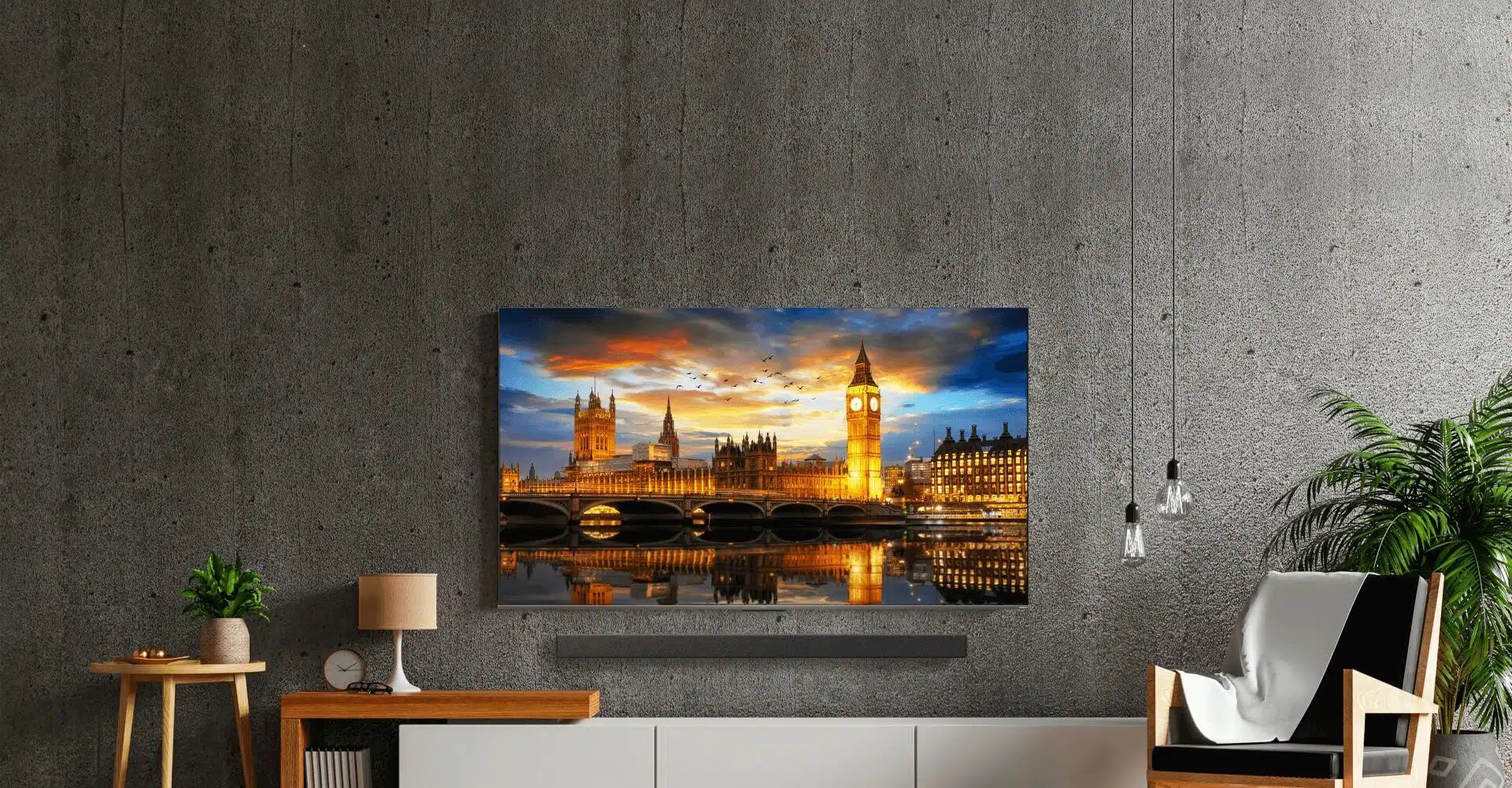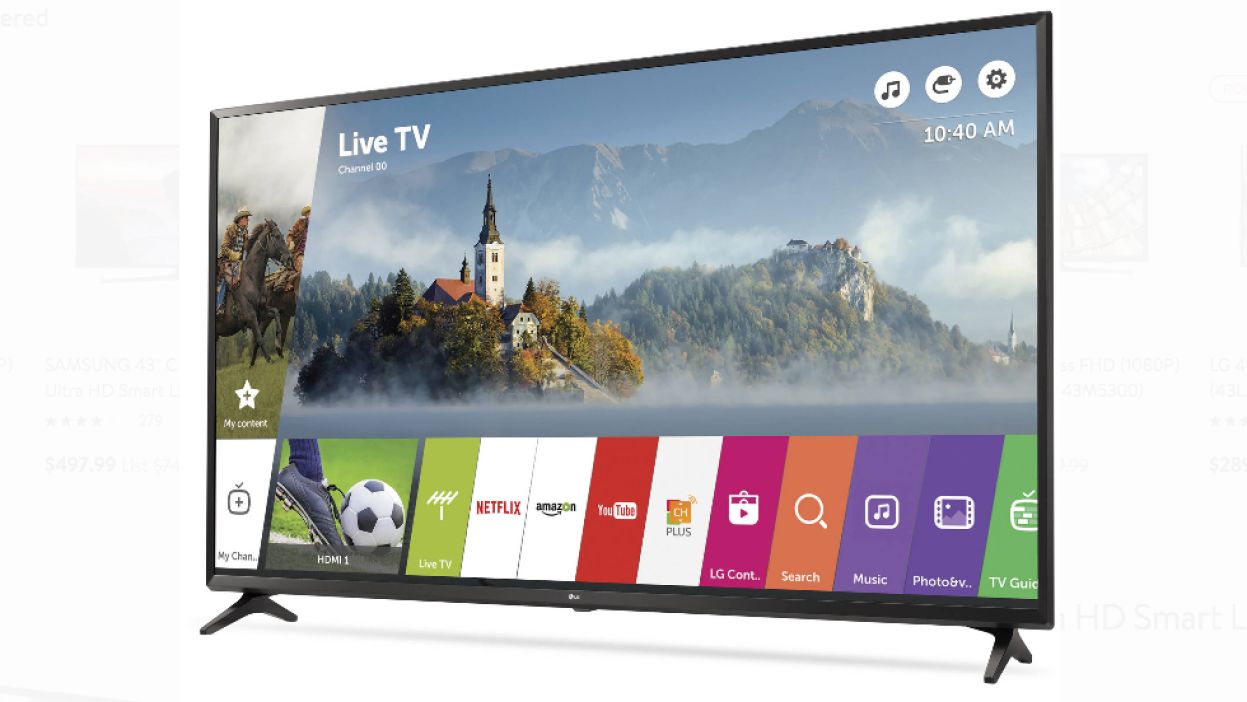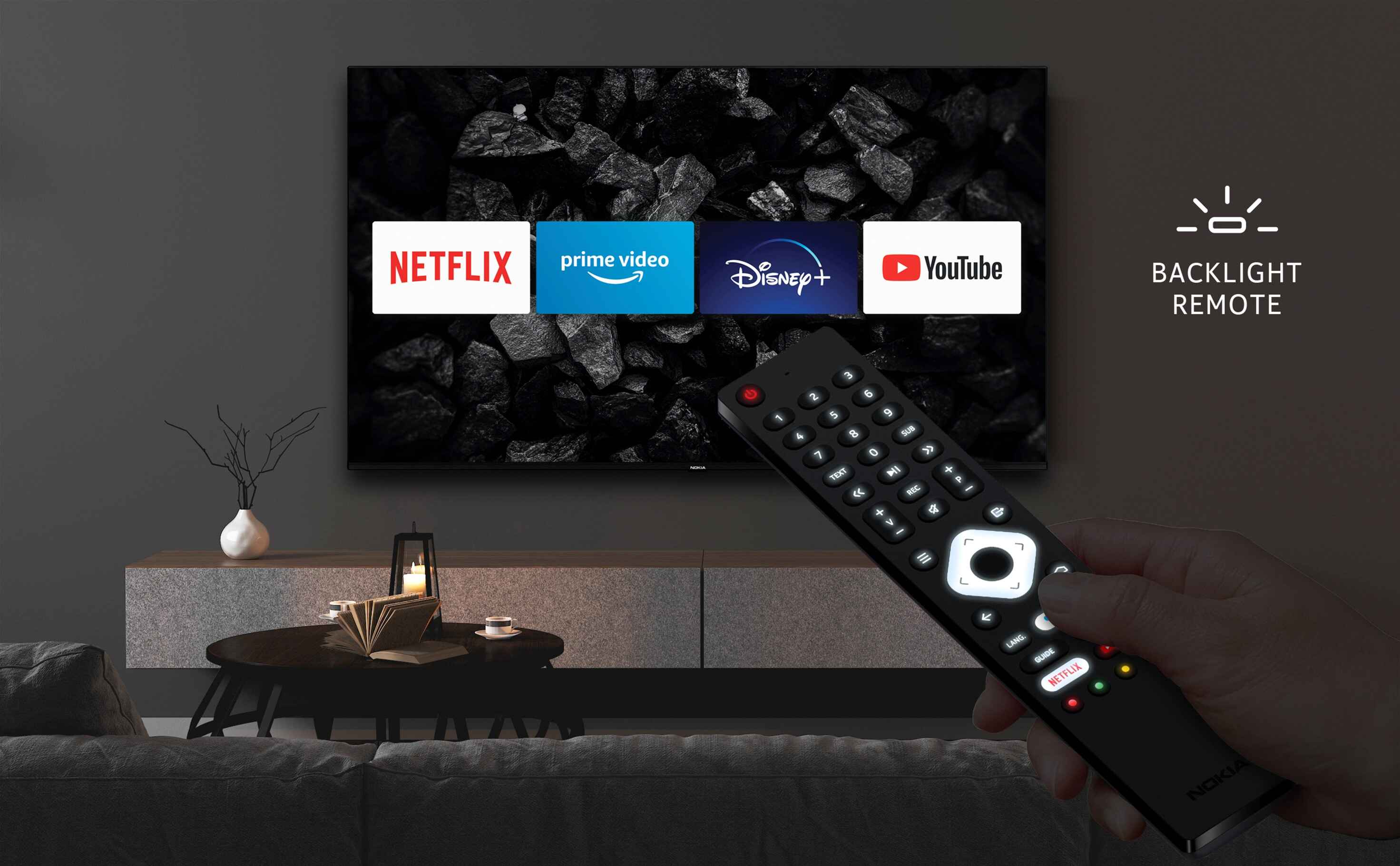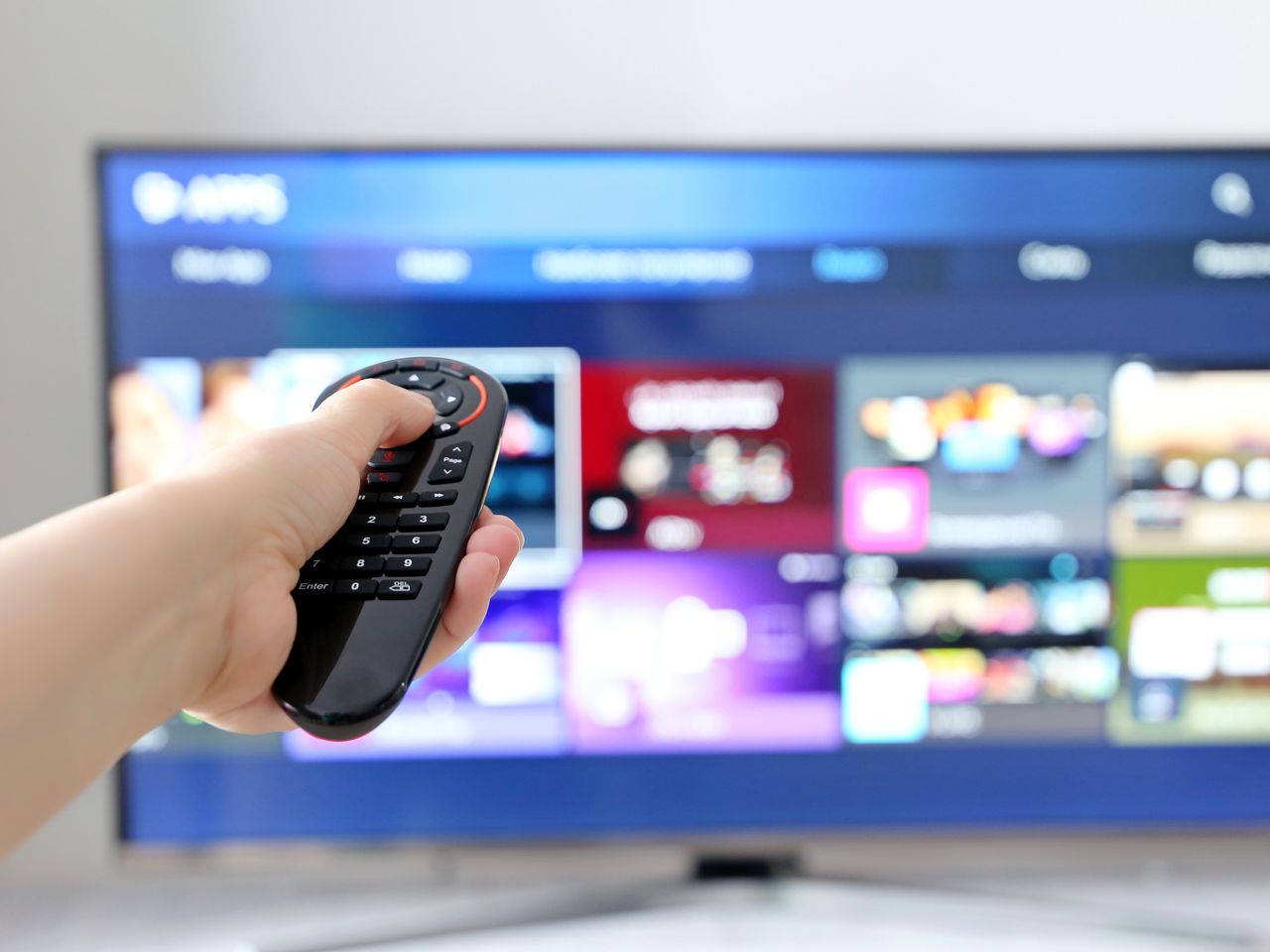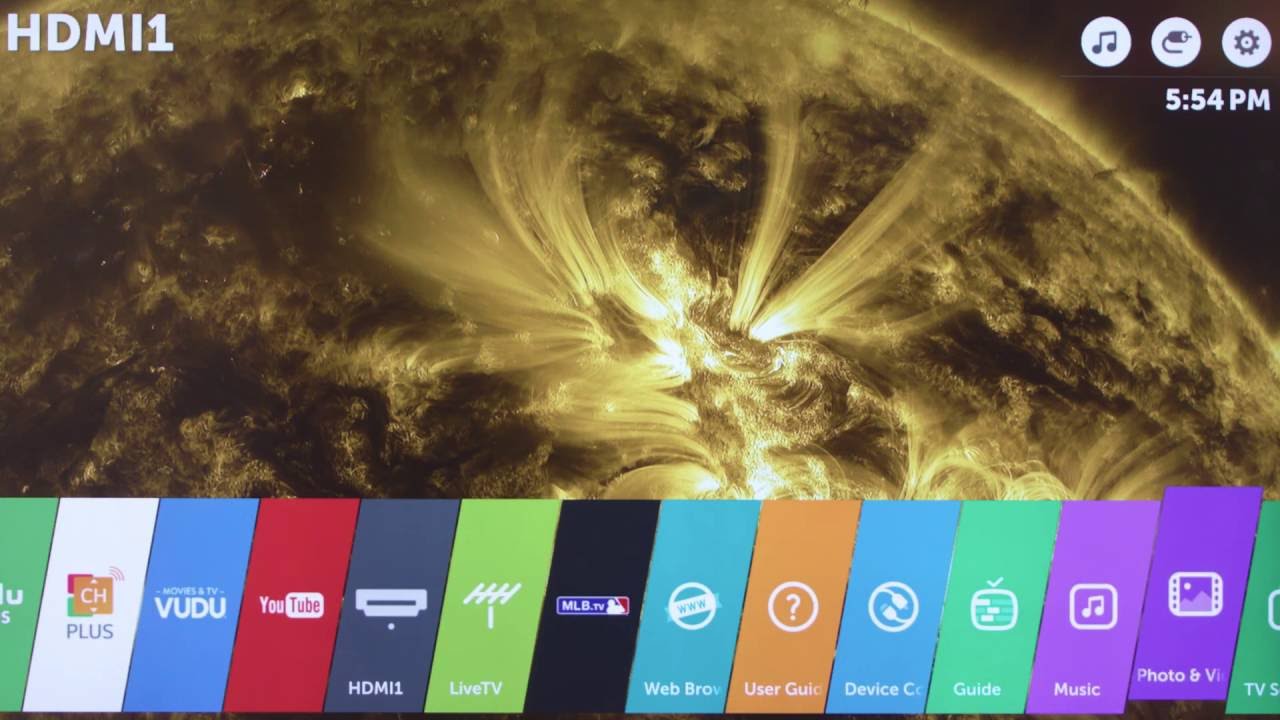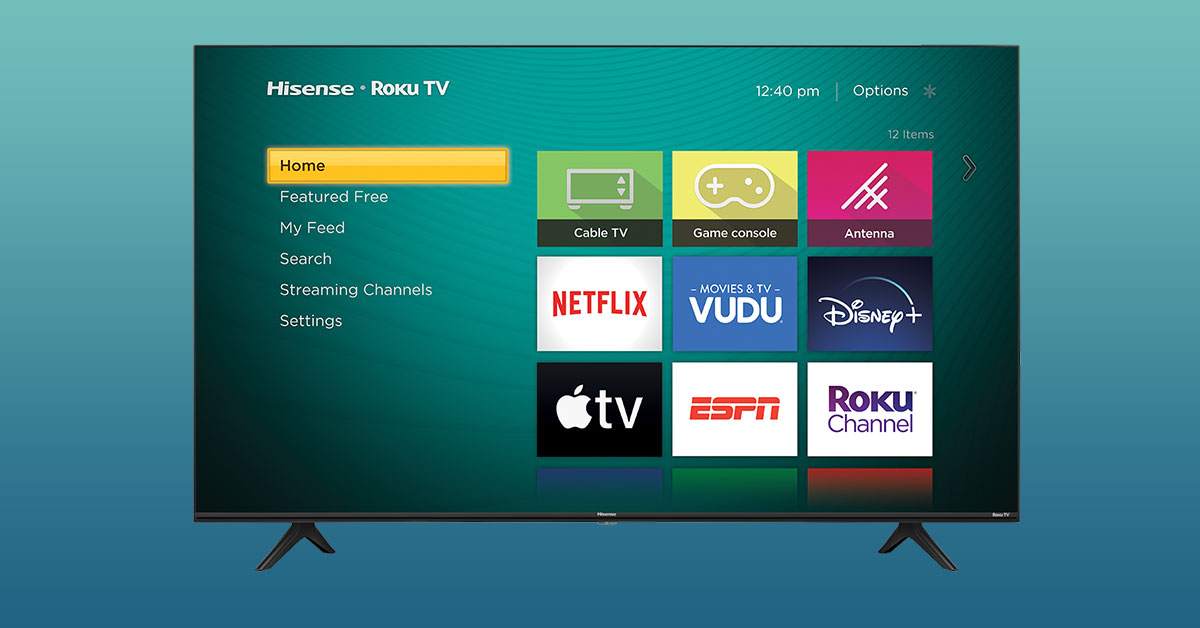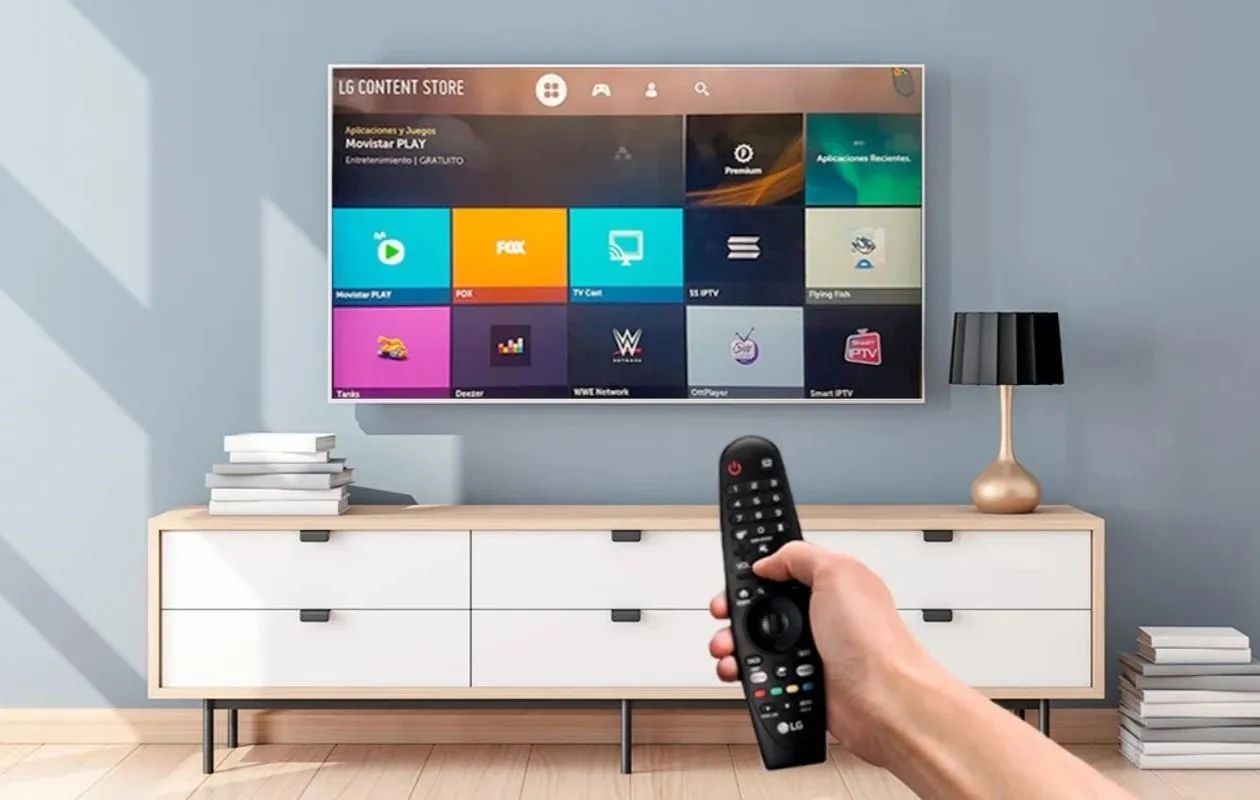Troubleshooting Smart TV Remote Issues
Having trouble with your smart TV remote? Don’t worry, you’re not alone. Remote control issues are a common frustration for many smart TV owners. Before you panic and start searching for a new remote, there are a few troubleshooting steps you can take to resolve the problem. Here are some tips to help you get your remote working again:
1. Check the Batteries: The most common cause of remote control issues is depleted batteries. Make sure to replace the batteries with fresh ones and check if the remote starts functioning properly.
2. Clean the Remote: Sometimes, dirt and debris can accumulate on the remote’s buttons, causing them to stick or become unresponsive. Use a damp cloth or alcohol wipe to gently clean the remote and remove any grime that may be affecting its performance.
3. Reset the Remote: If the remote is still not working, try resetting it. Remove the batteries and hold down the power button for a few seconds. Then, reinsert the batteries and test the remote to see if it’s functioning properly.
4. Check for Interference: Electronic devices and other wireless signals can interfere with the remote’s signal. Make sure there are no other devices nearby that could be causing interference. Move any potential sources of interference away from the TV and remote.
5. Pair the Remote: If you have a smart TV that requires pairing with the remote, follow the manufacturer’s instructions to re-pair the remote. This may involve pressing specific buttons or going into the TV’s settings menu.
6. Contact Customer Support: If none of the above steps work, it’s time to reach out to customer support. The manufacturer or retailer should be able to assist you further and provide a solution to the remote control issue.
Remember, before you give up on your remote, try these troubleshooting steps. In many cases, the issue can be resolved without the need for a new remote. However, if all else fails, it might be time to consider purchasing a new remote or exploring alternative ways to control your smart TV.
Controlling Your Smart TV Using a Mobile Device
Gone are the days when you had to rely solely on a remote control to operate your smart TV. Nowadays, you can easily control your TV using your smartphone or tablet. Here are some methods to control your smart TV using a mobile device:
1. Smart TV Apps: Most smart TV manufacturers provide companion apps that can be downloaded onto your mobile device. These apps allow you to control your TV’s functions, such as changing channels, adjusting volume, and navigating through menus, all from the convenience of your phone or tablet. Simply download the appropriate app for your smart TV model, ensure that your mobile device and TV are connected to the same Wi-Fi network, and follow the app’s instructions to set it up.
2. Screen Mirroring: Another way to control your smart TV using your mobile device is through screen mirroring. Many smart TVs have built-in support for screen mirroring, which allows you to mirror the display of your mobile device onto the TV screen. This means that whatever you do on your phone or tablet, whether it’s browsing the internet, streaming videos, or playing games, will be displayed on the TV. To activate screen mirroring, go to the settings on your TV and enable the screen mirroring option. Then, on your mobile device, access the screen mirroring menu and select your TV’s name from the available devices list.
3. Virtual Remote Control Apps: If you prefer the traditional remote control layout, there are virtual remote control apps available that simulate the functionality of a physical remote on your mobile device’s screen. These apps typically offer all the basic remote control features, such as changing channels and adjusting volume, along with additional features like voice control and content search. To use a virtual remote control app, download the app compatible with your smart TV brand, connect your mobile device to the same Wi-Fi network as your TV, and follow the app’s instructions to set it up.
Controlling your smart TV using a mobile device provides convenience and flexibility. Whether you’re lounging on the couch or moving around the room, your mobile device allows you to access and manage your smart TV’s functions with ease. Make sure to explore the various methods available for your specific smart TV model and enjoy the convenience of controlling your TV from the palm of your hand.
Using the TV’s On-Screen Keyboard
Typing on a TV remote control can be a tedious task, especially when searching for your favorite shows or entering usernames and passwords. Luckily, many smart TVs come equipped with an on-screen keyboard that makes text input much easier. Here’s how to use the on-screen keyboard on your smart TV:
1. Navigate to the Text Input Field: Whenever you encounter a text input field, such as a search bar or login screen, on your smart TV, you’ll need to activate the on-screen keyboard. Use your remote control to navigate to the text input field by using the arrow keys or directional pad. Select the text input field to bring up the on-screen keyboard.
2. Selecting Characters: Once the on-screen keyboard appears, you can use the arrow keys or directional pad on your remote control to move the cursor and select letters, numbers, or symbols. The layout of the on-screen keyboard may vary depending on your TV model, but it typically follows a QWERTY layout. Use the arrow keys or directional pad to navigate through the different characters, and press the enter or OK button on your remote control to select the desired character.
3. Using Predictive Text: Some smart TVs offer predictive text functionality, which suggests words based on the characters you’ve entered. This can significantly speed up text input. As you type, the TV will display a list of suggested words. Use the arrow keys or directional pad to navigate through the suggestions and press enter or OK to select the desired word.
4. Editing Text: If you make a mistake while typing or need to delete a character, use the backspace or delete key on the on-screen keyboard. Navigate to the backspace or delete key using the arrow keys or directional pad, and press enter or OK to delete the character before the cursor.
5. Special Characters and Symbols: To access special characters, symbols, or uppercase letters, most on-screen keyboards have dedicated buttons or options. Look for a key labeled “Shift” or “Caps” to toggle between uppercase and lowercase letters. Additionally, there may be a key or option that brings up a separate menu for selecting special characters and symbols.
Using the on-screen keyboard on your smart TV eliminates the frustration of typing with a traditional remote control. It provides a more user-friendly and efficient way to input text, whether it’s for searching, logging into accounts, or entering information. Take advantage of this feature to make your smart TV experience more seamless and enjoyable.
Using HDMI-CEC to Control Your Smart TV
Controlling your smart TV becomes even more effortless with HDMI-CEC (Consumer Electronics Control). HDMI-CEC is a feature that allows you to control multiple HDMI-connected devices using a single remote control. Here’s how you can take advantage of HDMI-CEC to control your smart TV:
1. Check HDMI-CEC Compatibility: First and foremost, ensure that your smart TV supports HDMI-CEC. HDMI-CEC may have various names depending on the manufacturer, such as Anynet+ (Samsung), Bravia Sync (Sony), or Simplink (LG). Consult your TV’s user manual or check the settings menu to confirm if HDMI-CEC is available on your TV.
2. Enable HDMI-CEC: Once you’ve confirmed that your TV supports HDMI-CEC, navigate to the settings menu and look for the HDMI-CEC or a similar option. Enable this feature to allow your TV to communicate with other HDMI-connected devices.
3. Connect HDMI Devices: Connect supported HDMI devices, such as streaming devices, gaming consoles, or Blu-ray players, to your smart TV using HDMI cables. Make sure that each device also supports HDMI-CEC for optimal compatibility.
4. Control Your TV with a Single Remote: With HDMI-CEC enabled, you can now use the remote control of any HDMI-connected device to control your smart TV. For example, if you’re using a streaming device like a Roku or Apple TV, the remote control for that device can also navigate the TV’s menus, adjust volume, change inputs, and power on/off the TV. It simplifies your TV viewing experience by eliminating the need for separate remotes for each device.
5. Additional HDMI-CEC Functionality: HDMI-CEC goes beyond basic control functions. Depending on your TV and connected devices, you may have access to other features like automatic input switching, volume control through external audio systems, and even playing media from your mobile device directly on the TV using the remote control. Explore the possibilities and check the user manual or online resources for more information on specific HDMI-CEC functionalities available on your TV.
Using HDMI-CEC to control your smart TV not only streamlines your entertainment experience but also reduces clutter by minimizing the number of remotes you need to keep track of. It’s a convenient and efficient way to control multiple HDMI-connected devices with just one remote control. Ensure that your devices and TV are HDMI-CEC compatible, enable the feature, and start enjoying the seamless control over your smart TV and connected devices.
Installing a Remote Control App
If you find yourself constantly misplacing or struggling with your smart TV remote, installing a remote control app on your mobile device can be a game-changer. With a remote control app, you can convert your smartphone or tablet into a virtual remote and conveniently control your smart TV. Here’s how to install and use a remote control app:
1. Check Compatibility: Start by ensuring that your smart TV and mobile device are compatible with remote control apps. Most smart TV manufacturers provide official apps for their TVs, which are available for download on both iOS and Android platforms. Check your TV manufacturer’s website or app store to find the official remote control app for your specific smart TV model.
2. Download and Install: Once you’ve identified the app for your smart TV, download and install it on your mobile device. You can find the app by searching for the manufacturer’s name in your device’s app store. Make sure to download the official app to ensure compatibility and access to all the necessary features.
3. Connect Your TV and Mobile Device: Connect your TV and mobile device to the same Wi-Fi network. This is crucial for the app to communicate with your smart TV. Open the app on your mobile device, and it will automatically search for available smart TVs within the same network. Once your TV is detected, follow the on-screen instructions to establish the connection between your TV and mobile device.
4. Enjoy Remote Control Functionality: Now that your mobile device is connected to your smart TV, you can start using it as a remote control. The app will provide a user-friendly interface that replicates the functions and buttons of a traditional remote control. You can navigate through menus, adjust volume, change channels, and access additional features depending on your smart TV model and the capabilities of the app.
5. Additional App Features: Some remote control apps offer additional features that enhance your TV viewing experience. These may include voice search, content recommendations, keyboard input, and even the ability to stream media from your mobile device directly to the TV. Explore the app’s settings and features to make the most out of your remote control app.
By installing a remote control app on your mobile device, you no longer have to worry about losing or dealing with a malfunctioning physical remote. It provides a convenient and accessible solution to control your smart TV right from the palm of your hand. Download the official app for your smart TV, connect your TV and mobile device, and enjoy the benefits of using a virtual remote control.
Connecting a Wireless Keyboard or Mouse
If you prefer a more traditional approach to controlling your smart TV, you can connect a wireless keyboard or mouse to provide a familiar and efficient input method. By using a wireless keyboard or mouse, you can easily navigate through menus, search for content, and type with ease. Here’s how to connect a wireless keyboard or mouse to your smart TV:
1. Check Compatibility: Before purchasing a wireless keyboard or mouse, ensure that it is compatible with your smart TV. Most smart TVs have USB ports or Bluetooth functionality that allows for the connection of external devices. Check your TV’s user manual or the manufacturer’s website to confirm if your TV supports wireless keyboards and mice.
2. USB or Bluetooth Connection: Depending on the wireless keyboard or mouse you purchase, you can connect it to your smart TV in one of two ways: via USB or Bluetooth. If your TV has USB ports, simply plug in the USB receiver that comes with the wireless keyboard or mouse into one of the TV’s USB ports. The TV should detect the device and enable you to use it immediately. If your wireless keyboard or mouse supports Bluetooth connectivity, you can pair it with your smart TV by navigating to the Bluetooth settings on the TV and following the pairing instructions provided by the device manufacturer.
3. Set Up the Keyboard or Mouse: After connecting the wireless keyboard or mouse, the TV should automatically recognize the device and start working. If not, you may need to go into the TV’s settings menu to ensure that the input device is recognized and configured correctly. Check the TV’s user manual or online support resources to find specific instructions for setting up and configuring external input devices.
4. Enjoy the Convenience: Once your wireless keyboard or mouse is successfully connected to your smart TV, you can enjoy the convenience of using a familiar input method. Navigating through menus, entering search queries, typing passwords, and even playing games become much more comfortable and efficient. Take advantage of the additional functionality and ease of use that a wireless keyboard or mouse provides.
Connecting a wireless keyboard or mouse to your smart TV brings a sense of familiarity and control to your TV viewing experience. Whether you prefer the tactile feel of a keyboard or the precision of a mouse, this setup allows you to effortlessly interact with your smart TV. Just make sure to check compatibility, choose the right connection method, and enjoy the convenience and efficiency of using a wireless keyboard or mouse with your smart TV.
Using a Universal Remote with Your Smart TV
If you have multiple devices connected to your entertainment system, managing multiple remote controls can be a hassle. Thankfully, using a universal remote control can simplify the process by allowing you to control all your devices, including your smart TV, with a single remote. Here’s how you can use a universal remote with your smart TV:
1. Check Compatibility: Before purchasing a universal remote, ensure that it is compatible with your smart TV. Most universal remotes are designed to work with a wide range of devices, including smart TVs. Look for a universal remote that supports both infrared (IR) and Bluetooth communication, as some smart TVs may require Bluetooth connectivity for full functionality.
2. Set Up the Universal Remote: Once you have your universal remote, follow the manufacturer’s instructions to set it up. This usually involves entering a code or series of codes that correspond to your TV’s brand and model. The instructions typically come with a code list, and you can find specific codes online as well. Once you enter the correct code, the universal remote will be programmed to control your smart TV.
3. Test the Remote: After programming the universal remote, test it to ensure that it can control all the essential functions of your smart TV, such as power, volume, channel selection, and menu navigation. If any key functions are not working, try reprogramming the remote with a different code from the list until you find the one that provides full compatibility.
4. Additional Programming: In addition to controlling your smart TV, a universal remote can also be programmed to operate other devices in your entertainment setup, such as your DVD player, sound system, or streaming devices. Follow the instructions provided with the universal remote to program these additional devices, allowing you to control multiple devices with a single remote.
5. Customize the Remote: Many universal remotes offer additional customization options, such as the ability to assign specific functions to certain buttons or create macros for performing multiple actions with a single press. Explore the remote’s settings menu or refer to the user manual to learn how to personalize the remote to suit your needs.
Using a universal remote with your smart TV streamlines your entertainment experience by eliminating the need for multiple remote controls. With a single remote, you have full control over your smart TV and other connected devices. Invest in a compatible universal remote, set it up correctly, and enjoy the convenience and simplicity of managing all your devices with just one remote control.
Using Voice Control on Your Smart TV
Controlling your smart TV with voice commands has become increasingly popular and convenient. By utilizing voice control, you can navigate menus, search for content, adjust settings, and perform various functions on your smart TV without even picking up a remote control. Here’s how to use voice control on your smart TV:
1. Check for Voice Control Capabilities: To determine if your smart TV supports voice control, consult your TV’s user manual or visit the manufacturer’s website. Some smart TV models come with built-in voice control capabilities, while others may require an external voice control device or a compatible remote control with voice control functionality.
2. Set Up Voice Control: If your smart TV has built-in voice control, follow the on-screen instructions to set it up. This typically involves configuring the voice recognition feature and linking your TV to relevant online accounts, such as your streaming services or smart home devices. If you need an external voice control device, ensure that it is compatible with your smart TV and follow the manufacturer’s instructions for setup.
3. Activate Voice Control: Once the voice control feature is set up, you can activate it by pressing the designated voice control button on your remote or using a wake-up phrase specified by your smart TV, such as “Hey TV” or “OK Google.” The TV will respond with a prompt indicating that it is ready to receive voice commands.
4. Give Voice Commands: Speak clearly and naturally when giving voice commands to your smart TV. You can use a variety of voice commands, such as “Open Netflix,” “Search for action movies,” “Turn up the volume,” or “Navigate to settings.” Depending on your TV’s capabilities, you may also have the ability to control other smart home devices, ask for weather updates, and perform general internet searches using voice commands.
5. Explore Voice Control Features: Take the time to explore the full range of voice control features available on your smart TV. This may include personalized recommendations based on your viewing habits, voice-guided setup processes, and the ability to control specific apps or features with voice commands. Check your TV’s user manual or online resources for a comprehensive list of voice control capabilities.
Using voice control on your smart TV adds a new level of convenience and interactivity to your entertainment experience. Whether you’re searching for content, adjusting settings, or navigating through menus, voice control simplifies the process and allows for a hands-free operation. Utilize the voice control capabilities of your smart TV to enhance your viewing experience and enjoy the benefits of a truly interactive entertainment system.
Using the Smart TV’s Physical Buttons
While remote controls and mobile apps provide convenience and flexibility, don’t overlook the physical buttons on your smart TV. These buttons are often located on the side or bottom of the TV and can be a useful alternative for controlling your TV when you can’t find the remote or prefer a more tactile experience. Here’s how to use the physical buttons on your smart TV:
1. Power On/Off: The most basic function of the physical buttons is turning your smart TV on and off. Look for a button labeled “Power” or a similar symbol and press it to turn your TV on or off. This comes in handy when the remote control is missing or out of reach.
2. Channel and Volume Control: Most smart TVs have dedicated buttons for controlling the channel and volume. Look for buttons labeled with a “+” or “-” sign to adjust the volume. To change channels, often you will find buttons labeled with an arrow pointing up or down. Press the respective button to navigate through the available channels.
3. Menu Navigation: Smart TVs typically have a menu button or an “OK” button that allows you to access the TV’s settings and on-screen menu. Use this button to navigate through the menu options, such as picture settings, sound settings, apps, and inputs.
4. Input Selection: To switch between different input sources, such as HDMI, cable, or satellite, look for a button labeled “Input” or “Source.” Pressing this button will display a menu on your TV screen, allowing you to select the desired input source using the arrow buttons or number keys on the TV’s remote control.
5. Additional Functions: Depending on your smart TV model, there may be additional buttons that provide quick access to specific functions or features. These buttons might include a dedicated Netflix button, a home button, or buttons for accessing media playback controls directly on the TV.
Using the physical buttons on your smart TV can come in handy when you need quick control over essential functions or don’t have access to the remote control. It’s a reliable backup option that ensures you can operate your TV without any hassle.
While remote controls and mobile apps provide convenience and flexibility, don’t overlook the physical buttons on your smart TV. These buttons are often located on the side or bottom of the TV and can be a useful alternative for controlling your TV when you can’t find the remote or prefer a more tactile experience. Here’s how to use the physical buttons on your smart TV:
1. Power On/Off: The most basic function of the physical buttons is turning your smart TV on and off. Look for a button labeled “Power” or a similar symbol and press it to turn your TV on or off. This comes in handy when the remote control is missing or out of reach.
2. Channel and Volume Control: Most smart TVs have dedicated buttons for controlling the channel and volume. Look for buttons labeled with a “+” or “-” sign to adjust the volume. To change channels, often you will find buttons labeled with an arrow pointing up or down. Press the respective button to navigate through the available channels.
3. Menu Navigation: Smart TVs typically have a menu button or an “OK” button that allows you to access the TV’s settings and on-screen menu. Use this button to navigate through the menu options, such as picture settings, sound settings, apps, and inputs.
4. Input Selection: To switch between different input sources, such as HDMI, cable, or satellite, look for a button labeled “Input” or “Source.” Pressing this button will display a menu on your TV screen, allowing you to select the desired input source using the arrow buttons or number keys on the TV’s remote control.
5. Additional Functions: Depending on your smart TV model, there may be additional buttons that provide quick access to specific functions or features. These buttons might include a dedicated Netflix button, a home button, or buttons for accessing media playback controls directly on the TV.
Using the physical buttons on your smart TV can come in handy when you need quick control over essential functions or don’t have access to the remote control. It’s a reliable backup option that ensures you can operate your TV without any hassle.







